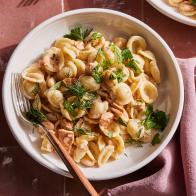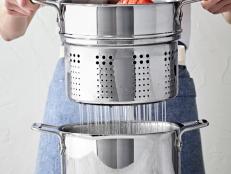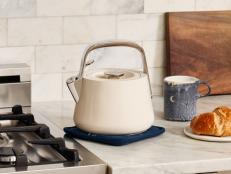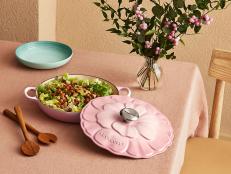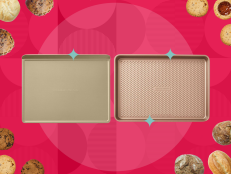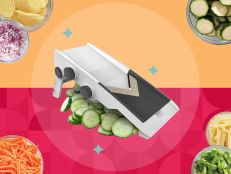5 Tips for Making Homemade Dumplings Like a Pro
Pot stickers from scratch are simpler than they seem.


Emily Hawkes
Get a Premium Subscription to the Food Network Kitchen App
Download Food Network Kitchen to sign up and get access to live and on-demand cooking classes, in-app grocery ordering, meal planning, an organized place to save all your recipes and much more.
In this series, we're showing off some of the coolest recipes, tips and tricks we've learned from chefs in the all-new Food Network Kitchen app.
—
While pulling out a store-bought bag of frozen pot stickers on a hectic Wednesday night is an all too familiar scene, setting aside time to make them from scratch can be therapeutic. For my family, and many Chinese American families, sitting around the kitchen table making dumplings together is a beloved way to spend a Saturday afternoon. Not to mention, the extra effort is well worth the difference in flavor and customization.
In his class on Pork and Ginger Pot Stickers, available on the Food Network Kitchen app, Ming Tsai breaks down every part of the dumpling making process – from shaping the dough to the best way to serve your meal. Here are five of his expert tips that will make this weekend project even more enjoyable.
Keep a Damp Towel Over the Dough
Raw dumpling skins are flat and thin, which makes them susceptible to drying out quickly. Ming suggests keeping a lightly damp towel over your batch as you roll out dumpling skins to keep them moist and pliable.
Salt Your Cabbage
Ming uses Napa cabbage in his filling, but before simply dropping chopped cabbage into the mix, he salts the cabbage separately, then lets it sit for 30 minutes. This process draws moisture out of the cabbage – so water doesn’t ultimately leach out of the pot sticker – and helps flavor the vegetable. After the half-hour, he places the cabbage in a clean kitchen towel, and wrings the water out of the bunch, reducing its volume by half.
Test Your Filling Before Wrapping
Before committing a mixture to 50 dumpling skins, Ming says he always tests his filling by cooking a small spoonful in the microwave or frying pan, then tasting. Ideally, he mentions, your filling should be “five percent saltier” than what you would normally eat. Dumpling dough isn’t seasoned, so when those two components come together, the flavors will balance out.
Try Cooking Dumplings in Chicken Stock
Typically, pot stickers are cooked in a frying pan with oil and water, but Ming uses chicken stock in place of water for a richer flavor.
Keep the Crispy Side Up
When serving cooked pot stickers, be sure to plate with their crispy sides up. Like all fried foods, steam is the enemy of crunch. If you place the dumplings crispy side-up, they’ll stay crunchy rather than getting soggy before hitting the dinner table.
Related Links:
If You’re Not Eating Rice for Breakfast, You Should Be

